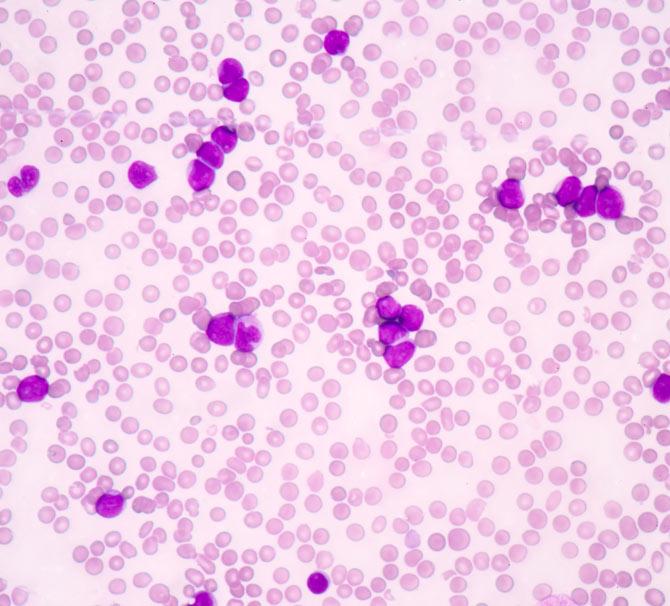On the occasion of World Lymphoma Awareness Day, we present some necessary information about this increasingly common form of cancer...

Lymphoma
>> Lymphoma is any group of blood cell tumours that develop in lymphatic cells (also known as lymphatic system, a vital part of the immune system, comprising a network of lymphatic vessels that carry a clear fluid called lymph directionally towards the heart). The name refers to just the cancerous ones rather than all such tumours.
>> Lymphomas developed in 566,000 people in 2012 and caused 305,000 deaths in 2012.
ADVERTISEMENT

Picture for representational purposes
>> Lymphomas make up 3–4% of all cancers, making them as a group the seventh-most common form. They are the third-most common cancer and often occur in developed nations rather than developing ones.
>> Symptoms of lymphoma may include enlarged lymph nodes (usually painless), fever, drenching sweats (mostly at night), weight loss, itching, and chronic fatigue.
>> The two categories of lymphomas are Hodgkin lymphomas (HL) and the non-Hodgkin lymphomas (NHL). Two other categories as types of lymphoma: multiple myeloma and immunoproliferative diseases have been added by the World Health Organisation (WHO). About 90 per cent of lymphomas are non-Hodgkin lymphomas.
>> Treatment for lymphoma patients may involve chemotherapy, radiation therapy, targeted therapy, surgery, plasmapheresis (for some non-Hodgkin lymphomas, were the blood becomes thick due to the increased amount of proteins produced by the lymphoma cells) and watchful waiting or disease monitoring prior to change in treatment. Plasmapheresis is the removal, treatment, and return of blood plasma from blood circulation.
>> Hodgkin lymphoma could be contracted due to infection with Epstein-Barr virus and a history of the disease in the family. Risk factors for common types of non-Hodgkin lymphomas include autoimmune diseases, HIV/AIDS, infection with human T-lymphotropic virus, excessive meat and fat consumption, immunosuppressant medications, and some pesticides.
>> Enlarged lymph nodes are diagnosed using lymph node biopsy. Patients' also undergo blood, urine and bone marrow tests. Spread is most often to lungs, liver, and/or brain and is discerned through the aid of medical imaging.
>> Lymphomas and leukemias are a part of the broader group of tumors of the hematopoietic and lymphoid tissues.
>> The five-year survival rate in the United States for all Hodgkin lymphoma subtypes is 85 per cent, while that for non-Hodgkin lymphomas it is 69 per cent. The outcome depends on the subtype with some being curable and treatment prolongs survival in most.
 Subscribe today by clicking the link and stay updated with the latest news!" Click here!
Subscribe today by clicking the link and stay updated with the latest news!" Click here!






